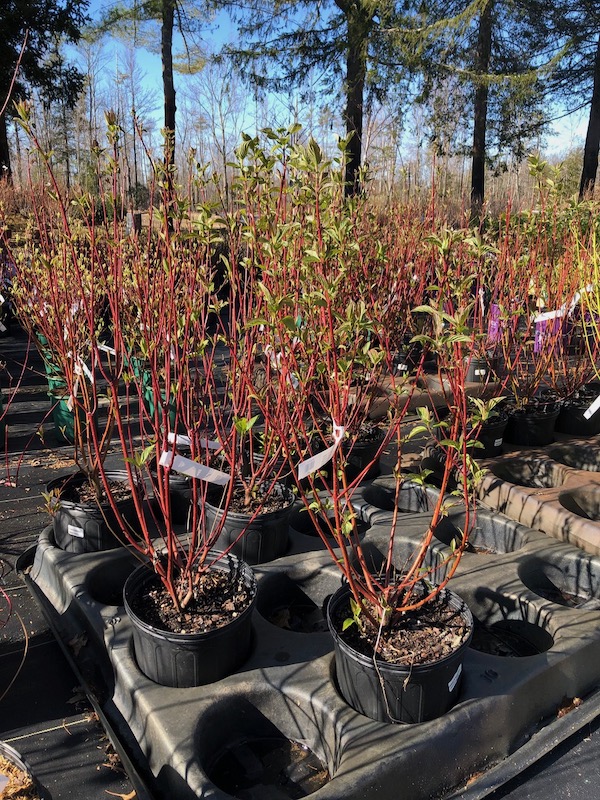After the warmest winter on record, we were all ready to get a jump start on the spring season. A gorgeous March built excitement for Spring garden projects. But, alas, nature is unpredictable. The spring storms in March and early April dealt a cruel blow, bringing strong winds, ice and heavy snow down on gardens that were just waking up.
At the nursery, we’ve seen firsthand the damage inflicted on our landscapes. Broken branches, crushed garden beds, and fallen trees – it was disheartening to say the least. But now the snow has melted, the bulbs are out, and buds are emerging. It is time to address the damage to the plants in your landscapes.
Most damage to trees and shrubs will be handled by pruning. For large trees (greater than 10 ft), it is important to contact a local arborist to ensure damage is removed safely. Anything you can reach from the ground should be safe to handle yourself. We recommend using sharp bypass pruners to make clean, diagonal cuts just above a bud on broken branches. If pruning is required right at the base of the branch, leave at least a centimeter of branch and do not cut flush with the trunk as these wounds are harder to heal. For branches that have broken and pulled away a part of the trunk, prune just to the bottom of the split. We do not recommend the use of pruning paint.

Red Twig Dogwood (Cornus sericea) is a large native shrub (up to 9 ft) that is excellent for windbreaks, erosion control and wet locations. Its fruit is a favorite of native birds.
Unfortunately, some of your trees or shrubs may be beyond saving. A deep split through a trunk could be left for observation on a small plant, but this is not recommended for any large tree as it will likely grow structurally unsound.
Some of your shrubs may have been snapped off right at the base. In these cases, you can wait and see what grows back, but it will likely be time to consider replacements. The good news is you don’t need to start from scratch. Staff at O’Donal’s can help you determine what trees and shrubs can give your garden a boost.
You may also be wondering, how can we prevent storm damage in the future? The keyword is biodiversity. Biodiversity creates resiliency in the landscape. The Maine Audubon said it well: “One of our greatest tools in fighting back and building resiliency is to increase biodiversity in our developed landscapes. As trees come down from storms or have invasive insects and other pressures, we must be ready to replant in their place. Planting a diverse range of native trees in our developed landscapes can alleviate these concerns, and they also provide benefits for both humans and wildlife.”
When replacing plants in your landscape, consider choosing native species to help restore the beauty and resiliency of your garden. It’s good for the environment and for the wildlife that lives there.
O’Donals is a local, independent, employee-owned nursery offering an inspiring selection of healthy and hardy plants. Our friendly, professional team is eager to answer your horticultural questions and to help make your landscaping ideas a successful reality.

